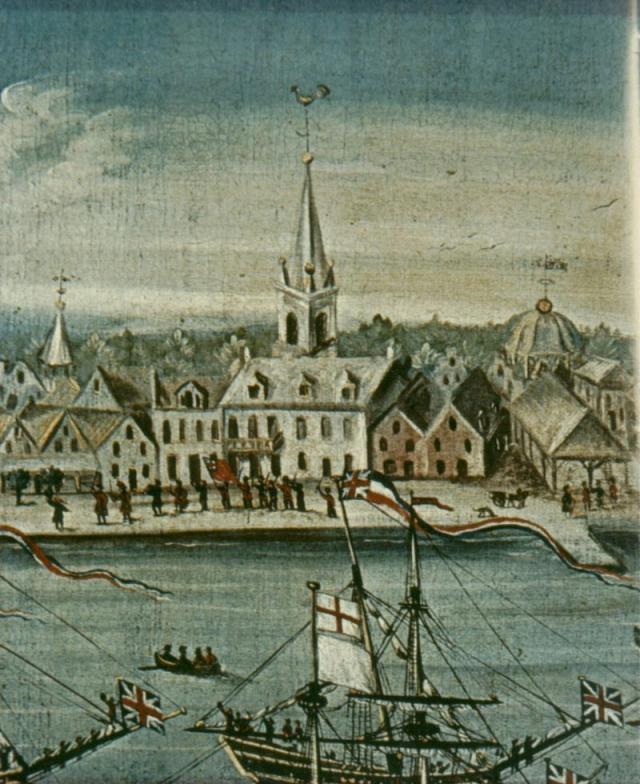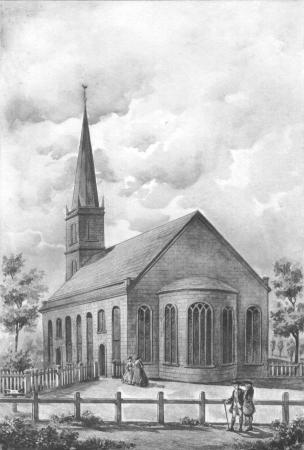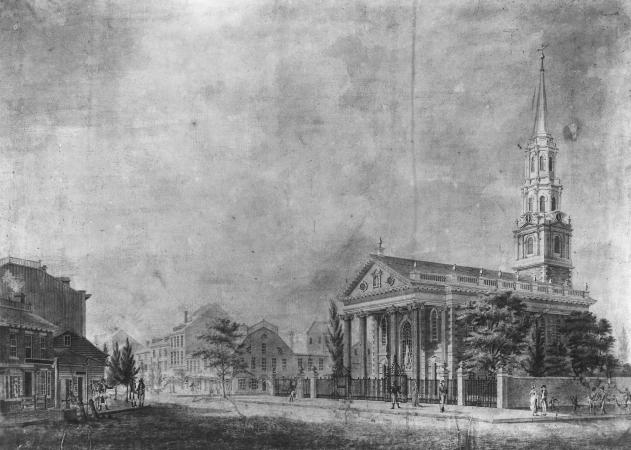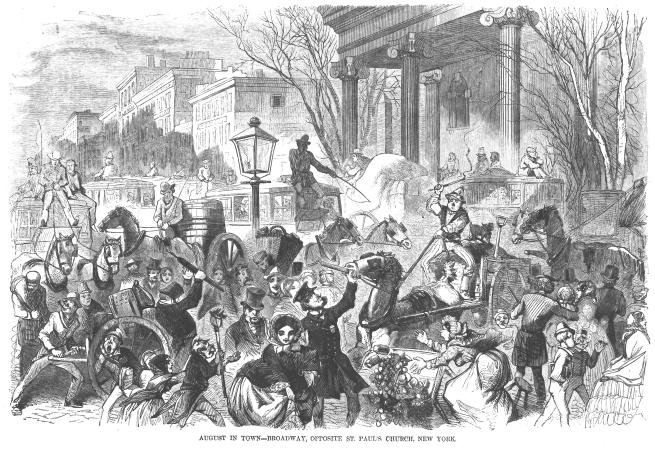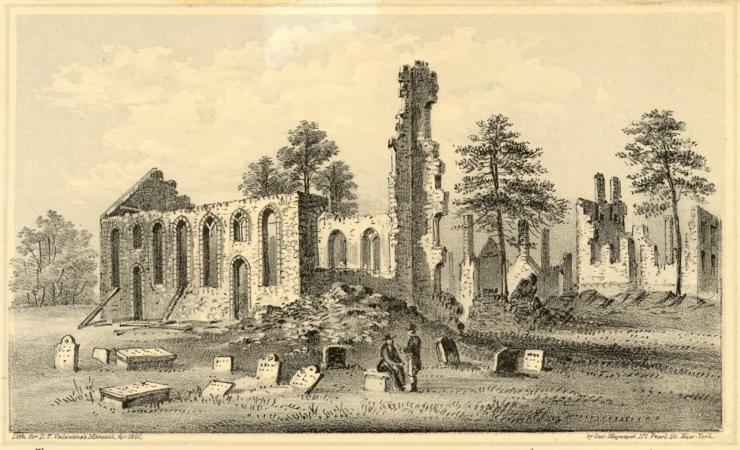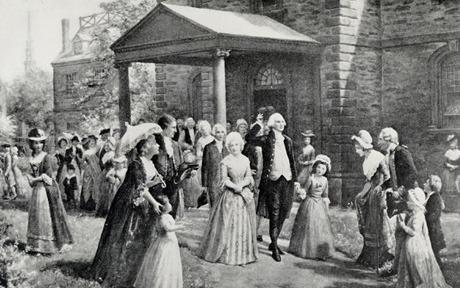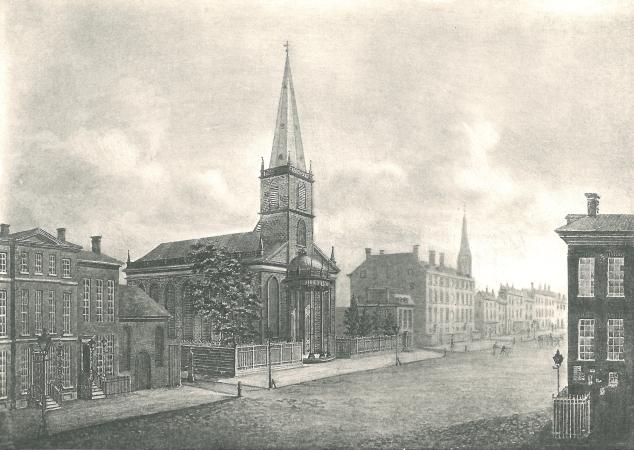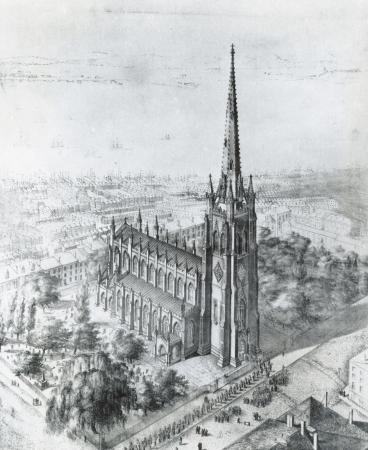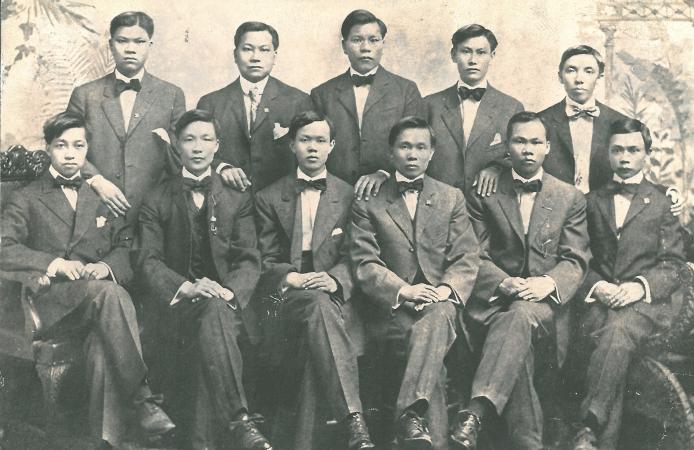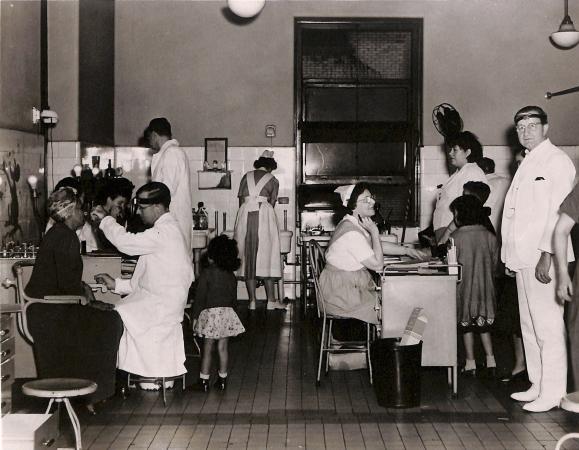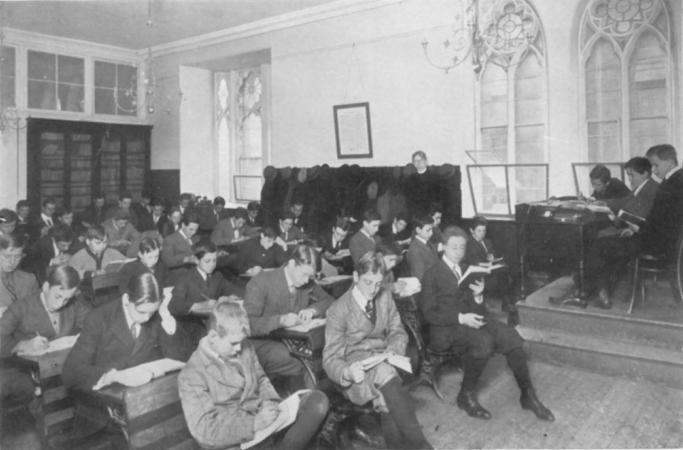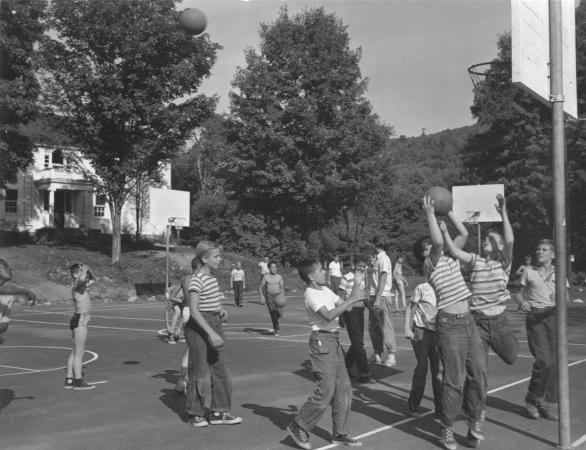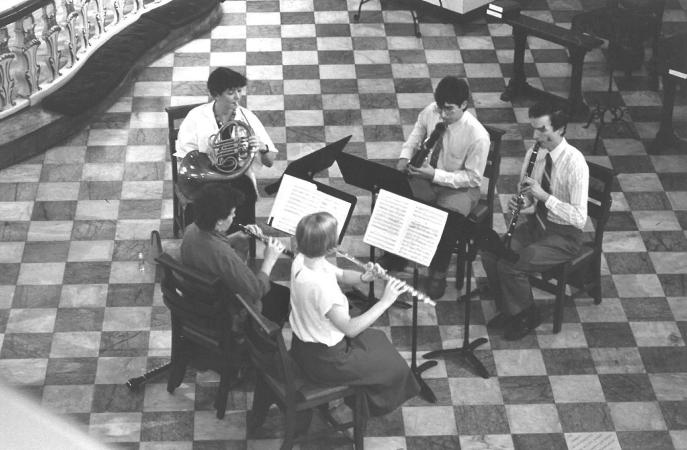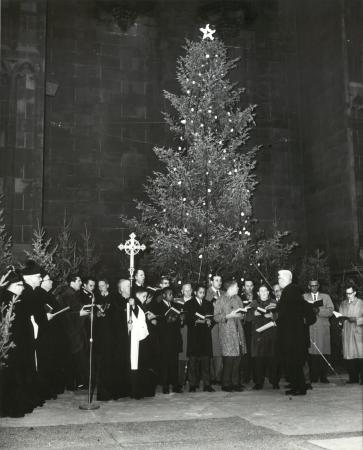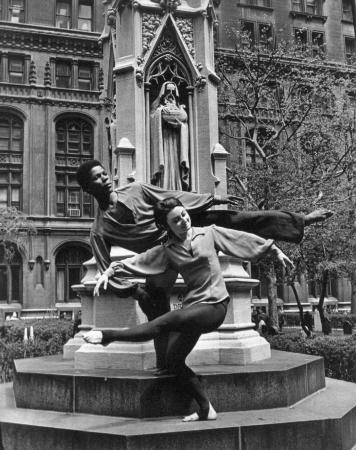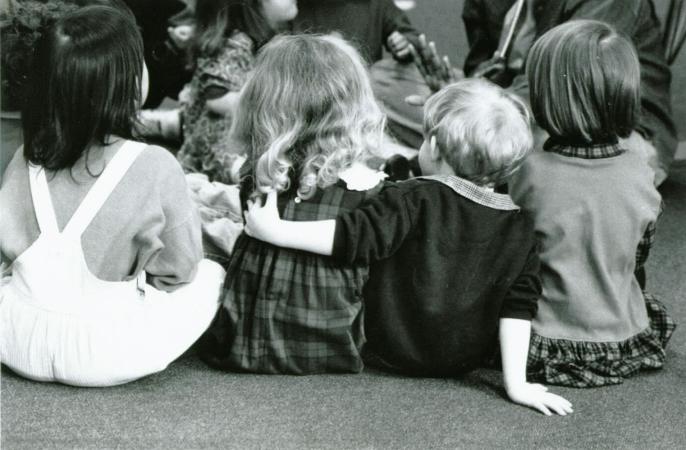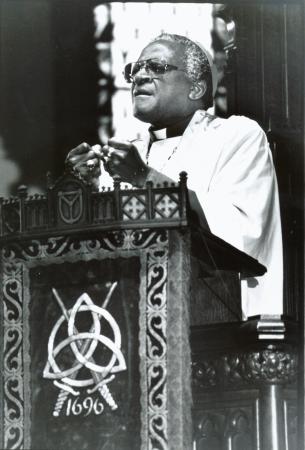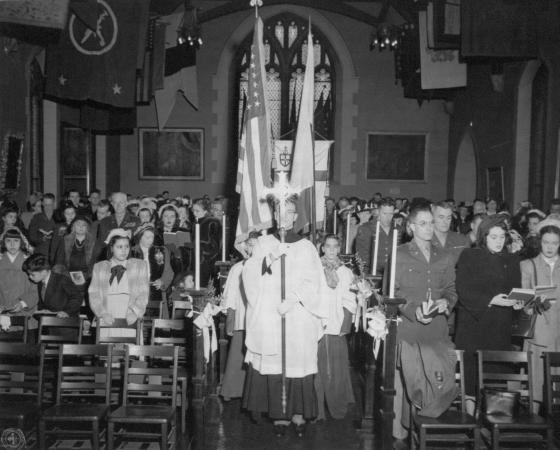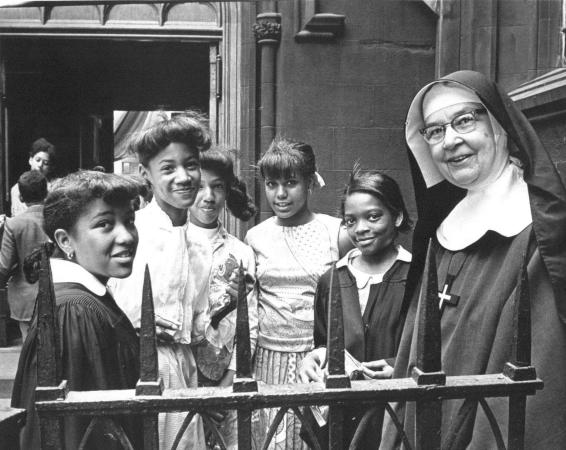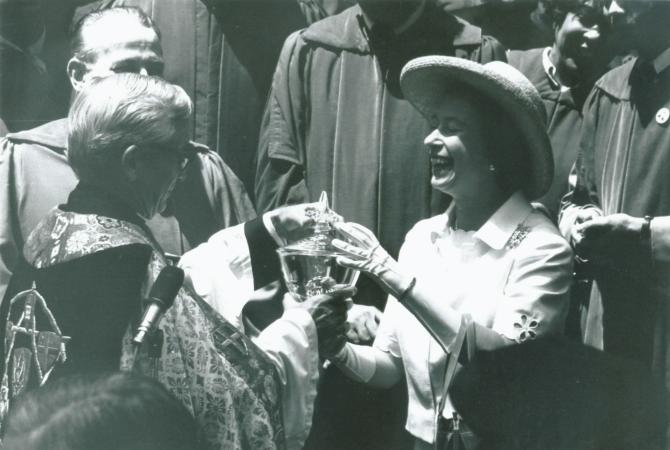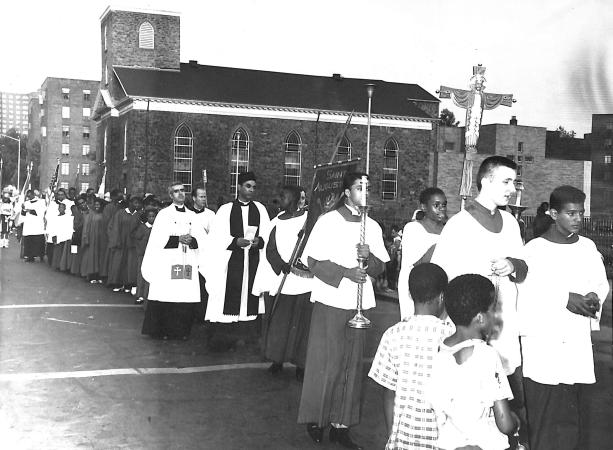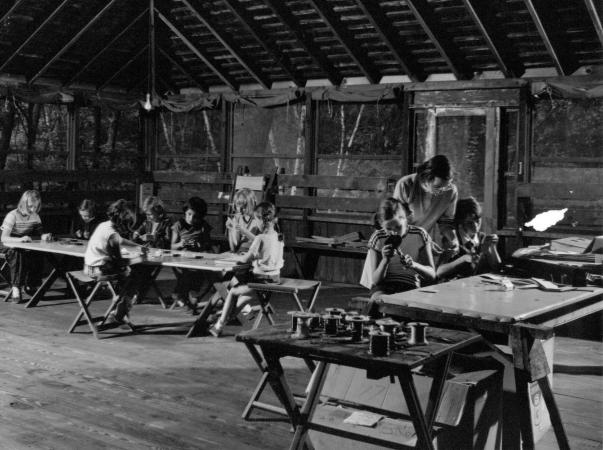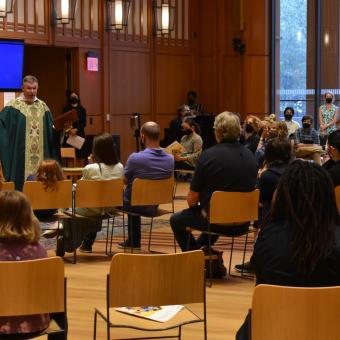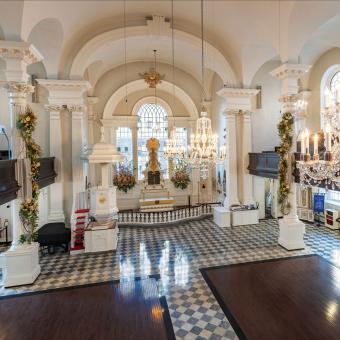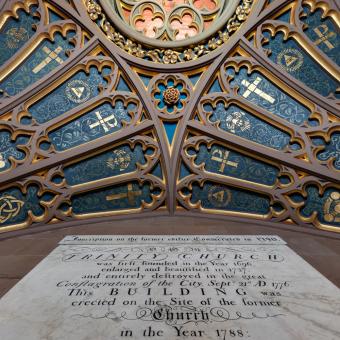Trinity Church Wall Street is an active Episcopal Parish that has been an integral part of New York City’s history for more than 300 years.
In 1696, a small group of Anglicans (members of the Church of England) petitioned the Royal Governor Benjamin Fletcher of New York, then a mercantile colony, for a charter granting the church legal status. Fletcher granted the charter in 1697 on behalf of King William III and the first Trinity Church was erected at the head of Wall Street facing the Hudson River. Although Anglican services had been held in the colony’s fort chapel, the building was the first Anglican church on the island of Manhattan.
To ensure the church's success, the governor granted Trinity a six-year lease on a tract of land north of Trinity known as the King's Farm. In 1705, Queen Anne made this land grant permanent by giving 215 acres, which Trinity has used over the years to support the mission and ministry of Trinity and Anglican Church.
By 1750, the population of New York City had more than doubled. Services in Trinity Church were packed, and the church decided to construct its first chapel-of-ease for its increasingly far-flung communicants. St. George’s Chapel opened on the corner of Beekman and Cliff Streets on the eastern side of the island in 1752. In 1766, with New York’s population nearing 20,000, Trinity built St. Paul’s Chapel just up Broadway at the corner of Vesey Street. Today, St. Paul’s is the only colonial-era church remaining in Manhattan, and the oldest public building in continuous use in the borough. It celebrated its 250th anniversary in October 2016.
The first Trinity Church building was destroyed in the Great Fire of 1776 during the Revolutionary War. St. Paul’s Chapel was saved by a bucket brigade that ran from the Hudson River up to the chapel’s roof. After the war, Trinity and all Anglican churches in the former American colonies legally separated from the Church of England. These churches together became the Episcopal Church, which is part of the worldwide Anglican Communion.
Following his inauguration as President of the United States in 1789, George Washington prayed in St. Paul’s Chapel. The next year, the second Trinity Church was completed. This church faced Wall Street and was both longer and wider than the first. The new steeple soared to a height of 200 feet. President Washington and members of his government were regular worshipers in the new Trinity building during the brief period New York City was the capital of the United States. Notable parishioners from this time include John Jay and Alexander Hamilton.
In 1838, the support beams of the second Trinity Church buckled. An architect named Richard Upjohn was hired to repair the building, but recommended demolishing the structure and constructing a new church. Upjohn, a fan of Anglo-Catholic liturgical style and English Gothic architecture, designed a church that looked like a 14th-century English parish church. Trinity Church, consecrated on Ascension Day 1846, is considered one of the first and finest examples of Neo-Gothic architecture in the United States. With a 281-foot high steeple, Trinity was the tallest building in New York City until 1890.
At various times in its more than 300-year history, Trinity Parish has included a total of eleven different chapels. Some were created to serve scattered communicants who followed the general shift uptown in Manhattan. Others were founded to further missionary work in less well-to-do communities. Most chapels still in existence in the 1970s were made independent in 1976. The exceptions were the Chapel of St. Cornelius the Centurion on Governor’s Island, and St. Paul’s Chapel, which remains an active part of the Trinity parish. In addition, Trinity, sometimes called the “mother of churches,” has provided aid to more than 300 churches in the metropolitan area throughout its history.
Today, the small group of Anglicans that founded Trinity Church Wall Street has grown to a community of more than 1,600 members with a long history of ministry both locally and globally. Trinity has given away a portion of the original land grant from Queen Anne to aid other churches and uses what remains to support its ministries. From the founding of a Charity School in 1709, to support for Desmond Tutu in Apartheid-era South Africa, to a wide variety of programs today, Trinity has evolved to respond to the spiritual and material needs of a changing, interconnected world.
Trinity's Rectors
THE REV. WILLIAM VESEY, D.D.
First Rector, 1697-1746
THE REV. HENRY BARCLAY, D.D.
Second Rector, 1746-1764
THE REV. SAMUEL AUCHMUTY, D.D.
Third Rector, 1764-1777
THE RT. REV. CHARLES INGLIS, D.D.
Fourth Rector, 1777-1783
THE RT. REV. SAMUEL PROVOOST, D.D.
Fifth Rector, 1784-1800
THE RT. REV. BENJAMIN MOORE, S.T.D.
Sixth Rector, 1800-1816
THE RT. REV. JOHN HENRY HOBART, D.D.
Seventh Rector, 1816-1830
THE REV. WILLIAM BERRIAN, D.D.
Eighth Rector, 1830-1862
THE REV. MORGAN DIX, S.T.D., D.C.L.
Ninth Rector, 1862-1908
THE RT. REV. WILLIAM THOMAS MANNING, D.D., S.T.D., D.C.L.
Tenth Rector, 1908-1921
THE REV. CALEB ROCHFORD STETSON, S.T.D.
Eleventh Rector, 1921-1932
THE REV. FREDERIC SYDNEY FLEMING, D.D., L.L.D., S.T.D.
Twelfth Rector, 1932-1951
THE REV. JOHN HEUSS, D.D., S.T.D., L.H.D.
Thirteenth Rector, 1952-1966
THE REV. JOHN VERNON BUTLER, D.D., S.T.D.
Fourteenth Rector, 1966-1972
THE REV. ROBERT RAY PARKS, D.D., S.T.D.
Fifteenth Rector, 1972-1987
THE REV. DANIEL PAUL MATTHEWS, D.D., L.H.D.
Sixteenth Rector, 1987-2004
THE REV. JAMES H. COOPER, D.M.
Seventeenth Rector, 2004-2015
THE REV. WILLIAM LUPFER, D.M.
Eighteenth Rector, 2015-2020
THE REV. PHILLIP A. JACKSON, M.Div.
Priest-In-Charge, 2020-2022
Nineteenth Rector, 2022-present
Plan Your Week at Trinity
Find out what's happening each week at Trinity Church Wall Street: services, special programs, and more.

